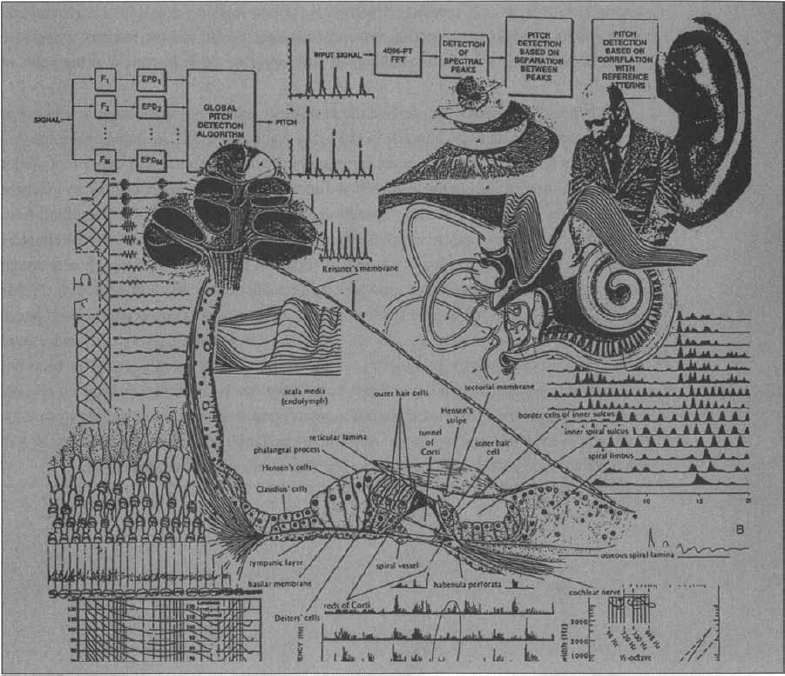PART IV
![]()
AUDITORY PERCEPTION

Man, if you gotta ask, you'll never know.
–Louis Armstrong (on being asked what jazz is)
DOES A falling tree make a sound if no one is there to hear it? By the physical definitions of Chapter 13, it most certainly does. Nevertheless, in this case the sound may not matter to us. The way in which sounds are interpreted by human hearing is obviously critical to speech communication and music appreciation. Similarly, coding and synthesis systems rely on some explicit or implicit model of how the acoustic signal is perceived by listeners. In the case of recognition, it is less obvious that human mechanisms for hearing are important, since in principle one could derive a completely artificial pattern-recognition system. However, human speech recognition is the one working example of a general and robust system for speech recognition and understanding. For all of these reasons, we believe that an introduction to the basic elements of auditory perception is critical to the goals of this text.
Chapter 14 provides a review of the peripheral auditory system, from the outer ear through the auditory nerve. Chapter 15 introduces psychoacoustics, focusing on the spectral resolution of human hearing. Such concepts are particularly important in light of the major emphasis ...
Get Speech and Audio Signal Processing: Processing and Perception of Speech and Music, Second Edition now with the O’Reilly learning platform.
O’Reilly members experience books, live events, courses curated by job role, and more from O’Reilly and nearly 200 top publishers.

